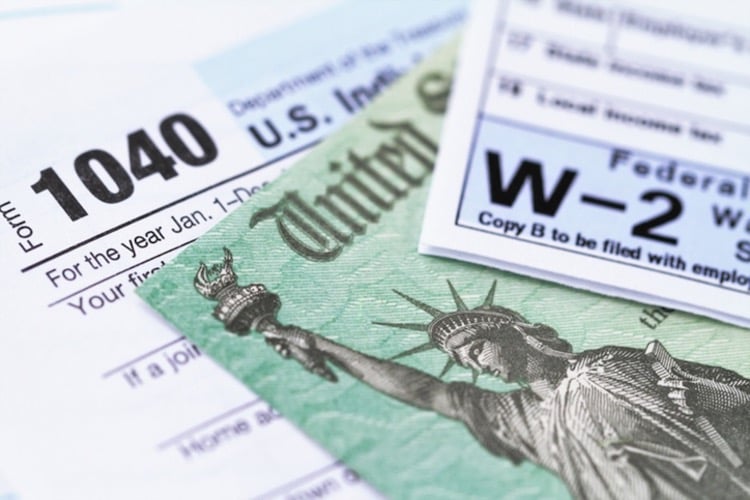Income falls into one of two categories: passive and active income. While most people have heard about passive and active income, many are unsure of the difference between the two or how to earn passive income.
Many believe that understanding how to create passive income is the key to building wealth and financial freedom. As Robert Kiyosaki (author of the bestseller Rich Dad Poor Dad) once said, “The key to financial freedom and great wealth is a person’s ability or skill to convert earned income into passive income and/or portfolio income.”
In this article, we’ll discuss the pros and cons of passive and active income and the benefits of earning passive income from real estate.
Key Takeaways
- The two main types of income are passive and active.
- Passive income includes money earned from interest, dividends, and rental property.
- Active income includes hourly wages, salaries, and commissions.
- Real estate investors can generate both active and passive income, depending on the investment strategy used.
- Passive income from real estate receives preferential tax treatment, with more opportunities for reducing the amount of income tax paid on passive income.
What is Active Income?
Active income is money received for performing a service, such as working a full or part-time job and receiving a salary, commissions, or tips. Earnings generated from self-employment or materially participating in a business and getting paid are two other forms of active income.
For most people, active income is earned before passive income can be generated.
Oftentimes real estate investors work a full-time job to earn active income, then reinvest as much as possible to begin building a passive income stream from things like rental properties.
Let’s review some examples of active income:
Hourly wages are a common way of receiving active income, whether from part-time or full-time employment. One of the potential advantages of being paid by the hour is that an employee may have the opportunity to earn extra income by working overtime, and on weekends and holidays.
Salary is a fixed amount of money received for working a regular schedule such as 8 to 5, Monday through Friday. Employees who receive a salary are effectively trading 40 hours of their time per week in exchange for a guaranteed amount of active income.
Commissions are another form of active income, although the amount of money received can dramatically vary based on the work. For example, real estate agents normally receive a commission ranging from 3% to 6% for selling a house and a leasing commission equal to one month of rent. However, people working a straight commission job often see their income streams rise and fall depending on the time of year and the deals that get done.
Tips are active income received based on the level of service provided. People working in the food service and hospitality industries often receive a fixed salary or hourly wage in addition to earning tips from satisfied customers.
Freelance fees and consulting income are two other types of active income. People with marketable skill sets that are in high demand, such as graphic designers or software developers, often start a freelance business and work for clients as independent contractors.

What is Passive Income?
Passive income is generally earned from an income-producing asset that the investor is not actively involved with. Often, that asset was purchased with savings from active income sources, like wages, salaries, or other compensation.
In addition to not having to spend hours a day generating passive income, investors do not pay Social Security or Medicare taxes on passive income and they can reduce their income tax liability with an array of potential tax deductions.
Now let’s review some examples of passive income:
Interest income can be earned in a number of ways, such as depositing savings in a certificate of deposit or owning a bond.
Unfortunately, the interest rate that many investments pay is less than the rate of inflation. That means an investor can actually lose principal by investing in an asset that pays passive interest income
Dividends from publicly traded stocks are another potential source of passive income. Some well-known blue chip companies paying dividends include Apple, Nike, and Mastercard.
However, as with interest income, dividends paid by companies can often be low. In fact, the S&P 500 Dividend Yield is currently 1.35% (as of June 2021), and has declined from 1.93% compared to the same time last year.
Limited partnership earnings from being a silent partner in a business or real estate investment can be a more profitable way to earn passive income with higher potential returns from recurring income plus a percentage of the profits if and when the business is sold.
Of course, higher returns often come with greater potential risks. Investors placing capital in a limited partnership as a silent, passive partner may run the risk of losing their entire investment.
Rental income from real estate can often offer attractive risk-adjusted returns by generating passive recurring net income along with potential profit from property value appreciation when the home is sold.
According to the Federal Reserve, the median sales price of houses sold in the U.S. has increased by nearly 67% since the last recession in 2007 – 2009. Single-family rents have also been growing as well.
As the most recent Single-Family Rental Investment Trends Report from Arbor Realty Trust reveals, rent growth in vacant-to-occupied single-family homes surged by 8.3% in January, the latest month of data availability.
However, real estate markets historically go through both up and down cycles. For example, home prices decreased between 2007 and 2009 from the market peak, prior to the beginning of the last recession. During that time, many people lost their homes to lender foreclosures and real estate investors buying short sales and REO property from the banks.
How to Generate Income from Real Estate
Real estate can generate active or passive income, and sometimes a combination of both. The type of income generated from real estate depends on an investor’s strategy and whether the investment objective is to generate potential income over the short term or long term:
Active Income from Real Estate
Investors involved in flipping and wholesaling real estate aim to generate income from real estate over a short period of time.
Home flippers purchase a property in need of repair for a below-market price, make any needed updates, then resell the home for a profit to a buy-and-hold rental property investor or a buyer looking for a primary residence. Flippers make repairs as quickly as possible, then resell before market conditions change.
Wholesalers are experts at identifying undervalued property, getting the home under contract, then assigning the purchase contract to an investor in exchange for a small wholesale fee. Networking with a real estate wholesaler can be a good way for finding off-market deals that may have instant equity once escrow closes and needed repairs are made.
Generating active income from real estate usually involves a high level of risk in exchange for the promise of a high reward, and can be similar to working a full time job. If property stops getting flipped or wholesale opportunities dry up, active income from real estate declines as well.
Passive Income from Real Estate
Passive income from real estate is generated by buy-and-hold investors in two different ways: Recurring net income after tenant rents have been collected and the bills have been paid, and from the potential profit from appreciation earned when a home is sold.
Many investors describe passive income from real estate as making money when you sleep. In fact, the political economist John Stuart Mill has been quoted as saying, “Landlords grow rich in their sleep without working, risking or economizing.”
To be fair, earning passive income from real estate does require some work, even when the day-to-day details of managing a rental property are delegated to a local property manager.
For example, a passive real estate investor regularly reviews financial reports such as an income statement and cash flow report, periodically visits remote investments owned out of state, and identifies new opportunities to scale up and grow a rental property portfolio.
One of the best things about owning passive real estate is that an investor can spend as little or as much time as they wish on their business. On the other hand, when active real estate investors stop working, they also stop getting paid.
That’s why many real estate investors seek to generate passive income through real estate.

How Passive and Active Incomes are Taxed
Another big benefit of earning passive income from real estate is the preferential tax treatment that passive income receives.
Active income earned from working a job or fixing and flipping real estate is treated by the IRS as earned income. Earned income is subject to FICA taxes of Social Security and Medicare taxes totaling 15.3%, up to a certain level of income.
Short-term capital gains made from wholesaling real estate or flipping homes are also taxed at the investor’s normal income tax rate when property is held for one year or less. In general, people earning active income also have limited opportunities for using tax deductions to reduce the amount of income tax paid.
Passive income isn’t subject to FICA taxes, and there are a number of ways an investor can potentially shelter passive income from higher effective tax rates. For example, common rental property deductions a passive real estate investor can claim include depreciation, repairs and maintenance, property management fees, mortgage interest payments, and property taxes.
Long-term capital gains tax paid when an investment property is sold is either 0%, 15%, or 20% based on the investor’s taxable income level and filing status. So, even if an investor is in the 32% federal income tax bracket or higher, the maximum capital gains tax paid would be capped at 20%.
Final Thoughts on This Topic
For any real estate investors, passive income can be better than active income. There are numerous tax benefits to earning passive income by investing in real estate. Many investors hold a full-time job to generate active income, then save as much as possible to reinvest in rental property to earn passive income. Passive income also may offer investors the opportunity to take advantage of favorable tax treatment and lowered tax liability.









